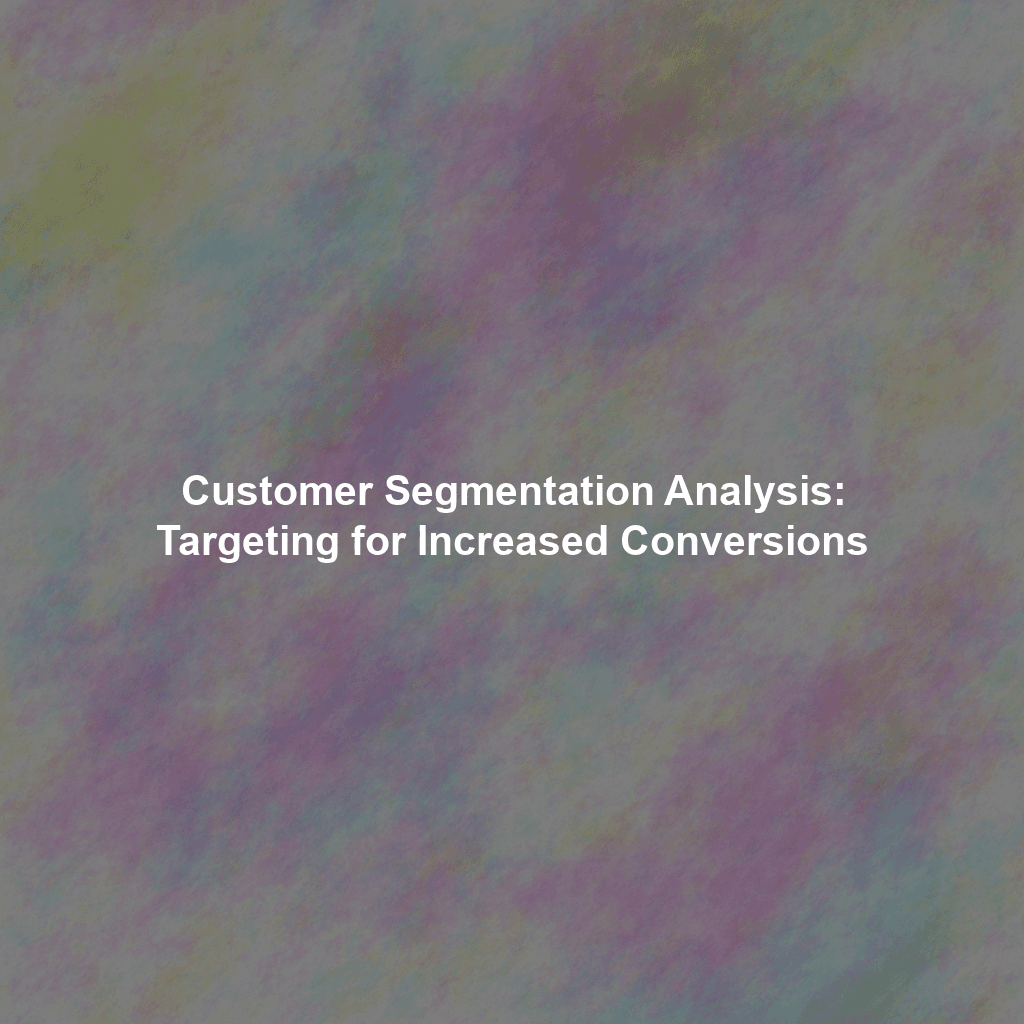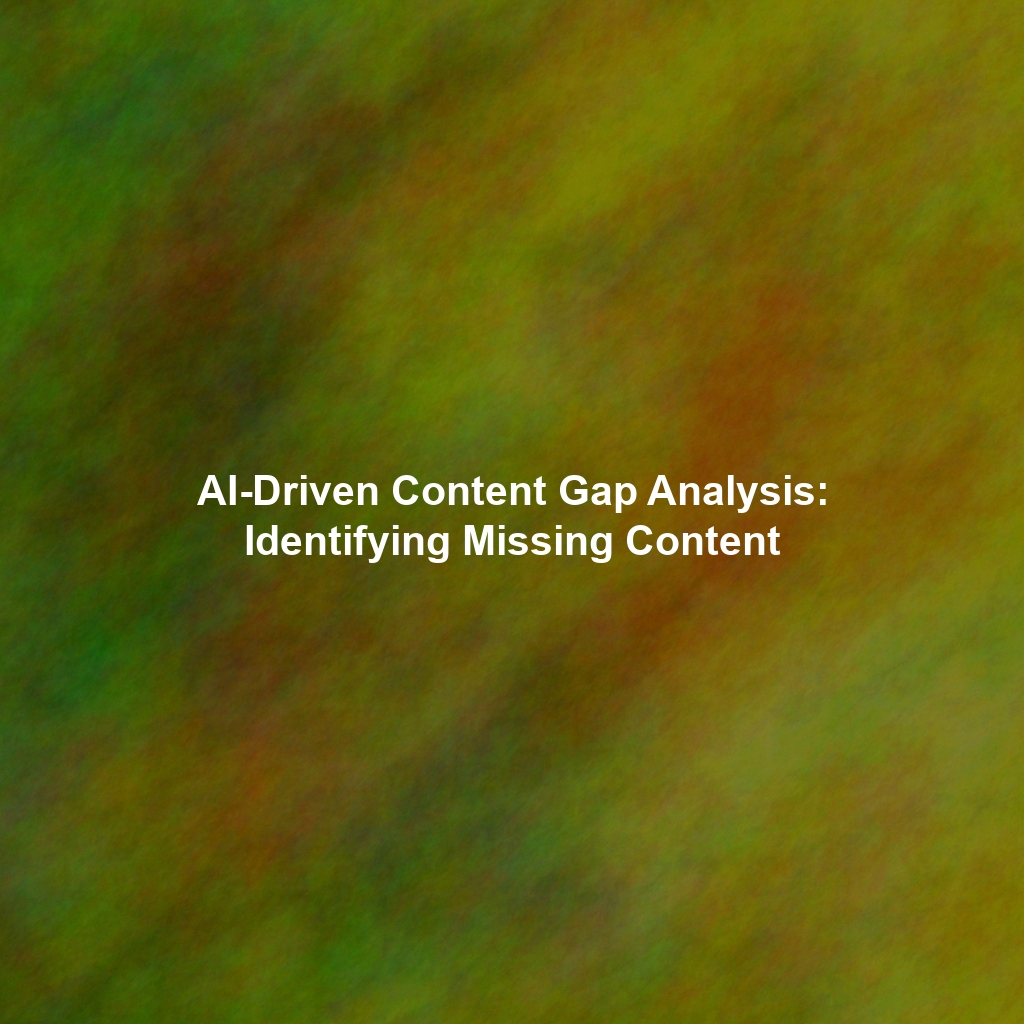Understanding Customer Segmentation: The Foundation of Targeted Marketing
Think of it this way: Imagine you’re selling both high-end sports cars and practical family sedans. Would you use the same advertising campaign for both? Of course not! You’d target different segments with different messages. Customer segmentation provides the framework for identifying who needs the sports car and who needs the sedan.
Why is Customer Segmentation Analysis Important for Conversion Optimization?
The benefits of customer segmentation analysis extend far beyond simply knowing your customers better. It’s a powerful tool for optimizing your marketing efforts and driving significant improvements in your conversion rates. Here’s a closer look at some key advantages:
- Enhanced Targeting Precision: By understanding the unique needs and preferences of each segment, you can create highly targeted marketing campaigns. This means delivering the right message, to the right people, at the right time. Precision targeting reduces wasted advertising spend and ensures your message resonates with the intended audience.
- Personalized Customer Experiences: Segmentation allows you to personalize the customer experience across all touchpoints. From email marketing and website content to product recommendations and customer service interactions, personalization fosters a stronger connection with your audience, leading to increased loyalty and repeat purchases.
- Improved Product Development: Analyzing customer segments can reveal unmet needs and emerging trends within your customer base. This valuable insight can inform product development efforts, ensuring you create products and services that are genuinely relevant and desirable to your target market.
- Optimized Pricing Strategies: Different customer segments may have varying price sensitivities. Segmentation helps you identify these price sensitivities and tailor your pricing strategies accordingly. You might offer premium pricing for segments that value exclusivity, while providing discounts and promotions to segments that are more price-conscious.
- Increased ROI on Marketing Spend: By focusing your marketing efforts on the most promising segments, you can maximize your return on investment (ROI). Targeted campaigns are generally more effective and efficient than broad, generic campaigns, leading to a significant improvement in your marketing performance.
- Better Customer Retention: Understanding customer segments and providing a personalized experience increases customer satisfaction and loyalty. Happier customers are more likely to stick around, leading to increased customer lifetime value.
Key Segmentation Variables: Building Your Customer Profiles
The foundation of effective customer segmentation lies in identifying the right variables to group your customers. There’s no one-size-fits-all approach here; the most relevant variables will depend on your specific industry, business model, and marketing goals. However, some common and effective segmentation variables include:
Demographic Segmentation
This is one of the most basic and widely used forms of segmentation. It involves grouping customers based on characteristics such as age, gender, income, education, occupation, marital status, and family size. Demographic data is often readily available and relatively easy to collect, making it a good starting point for your segmentation efforts.
Example: A luxury skincare brand might target affluent women aged 35-55 with marketing campaigns highlighting anti-aging benefits.
Geographic Segmentation
Geographic segmentation involves grouping customers based on their location, such as country, region, city, or even neighborhood. This is particularly relevant for businesses with physical locations or products that are influenced by local climate or culture. Consider factors like population density, climate, and cultural preferences.
Example: A snowblower manufacturer would focus its marketing efforts on regions with heavy snowfall during the winter months.
Psychographic Segmentation
This type of segmentation delves into the psychological aspects of your customers, such as their values, attitudes, interests, lifestyles, and personality traits. Psychographic data can provide valuable insights into why customers make certain purchasing decisions, allowing you to craft more emotionally resonant marketing messages. Collecting psychographic data often requires surveys, focus groups, or social media analysis.
Example: An outdoor adventure company might target individuals who value experiences over material possessions and enjoy activities like hiking, camping, and rock climbing.
Behavioral Segmentation
Behavioral segmentation focuses on how customers interact with your products, services, and brand. This includes factors like purchase history, frequency of purchase, spending habits, website activity, and engagement with marketing materials. Analyzing behavioral data can reveal valuable insights into customer loyalty, purchase patterns, and brand preferences.
Example: An e-commerce retailer might target customers who frequently purchase items from a specific category with personalized product recommendations and exclusive discounts.
Firmographic Segmentation (B2B)
For business-to-business (B2B) companies, firmographic segmentation is similar to demographic segmentation but applied to organizations rather than individuals. This involves grouping companies based on characteristics such as industry, company size, revenue, location, and number of employees. Firmographic data helps B2B companies identify their ideal target customers and tailor their sales and marketing efforts accordingly.
Example: A software company might target small to medium-sized businesses (SMBs) in the healthcare industry with a CRM solution designed to improve patient communication and streamline administrative tasks.
Technographic Segmentation
This segmentation focuses on the technologies that your customers use. It includes the software they use, the hardware they own, their internet access speed, and their online behavior. This segmentation is particularly useful for technology companies, but can be applied more widely to understand how customers interact with digital services.
Example: A cybersecurity company might target companies who use cloud-based infrastructure without adequate security protocols in place.
Implementing Customer Segmentation Analysis: A Step-by-Step Guide
Successfully implementing customer segmentation analysis requires a structured approach. Here’s a step-by-step guide to help you get started:
- Define Your Goals: Clearly define what you hope to achieve with customer segmentation. Are you looking to increase conversion rates, improve customer retention, develop new products, or personalize the customer experience? Having clear goals will help you focus your efforts and measure your success.
- Collect Data: Gather relevant data from a variety of sources, including your CRM system, website analytics, social media platforms, customer surveys, and purchase history. Ensure your data is accurate, complete, and properly organized.
- Analyze Data: Use statistical techniques and data mining tools to identify patterns and relationships within your data. Look for clusters of customers with similar characteristics and behaviors. Techniques like cluster analysis, regression analysis, and cohort analysis can be invaluable.
- Create Customer Segments: Based on your data analysis, create distinct customer segments that are meaningful and actionable. Ensure each segment is large enough to be worthwhile targeting.
- Develop Segment Profiles: Create detailed profiles for each segment, including their demographics, psychographics, behaviors, needs, and motivations. These profiles will serve as a guide for your marketing efforts.
- Tailor Your Marketing Strategies: Develop targeted marketing campaigns for each segment, using messaging, channels, and offers that are tailored to their specific needs and preferences.
- Test and Optimize: Continuously monitor the performance of your marketing campaigns and make adjustments as needed. A/B testing can be very effective for optimizing your messaging and offers. Customer segments are not static, so it’s important to revisit and refine your segmentation regularly.
- Integrate Segmentation Across Your Business: The benefits of customer segmentation extend beyond the marketing department. Share your segment data with sales, customer service, and product development teams to improve all aspects of the customer experience.
Tools and Technologies for Customer Segmentation Analysis
A variety of tools and technologies can assist you in implementing customer segmentation analysis. Here are a few popular options:
- CRM Systems (e.g., Salesforce, HubSpot, Zoho CRM): CRM systems are essential for managing customer data and tracking interactions. They often include built-in segmentation capabilities or integrate with third-party segmentation tools.
- Marketing Automation Platforms (e.g., Marketo, Pardot, ActiveCampaign): Marketing automation platforms allow you to automate your marketing campaigns and personalize the customer experience based on segment membership.
- Data Analytics Platforms (e.g., Google Analytics, Adobe Analytics): Data analytics platforms provide valuable insights into website traffic, user behavior, and marketing campaign performance, which can be used to inform your segmentation efforts.
- Data Visualization Tools (e.g., Tableau, Power BI): These tools help to visualize data patterns and relationships, making it easier to identify and understand customer segments.
- Statistical Software (e.g., SPSS, R): Statistical software provides advanced analytical capabilities for performing complex data analysis and creating sophisticated customer segments.
- Customer Data Platforms (CDPs) (e.g., Segment, Tealium): CDPs unify customer data from multiple sources into a single, comprehensive view. They are designed to help create accurate and up-to-date customer profiles for segmentation and personalization.
Conclusion: Unlocking Conversion Potential Through Customer Segmentation
Customer segmentation analysis is not just a marketing buzzword; it’s a fundamental strategy for achieving meaningful business results. By understanding your customers at a deeper level and tailoring your marketing efforts to their specific needs and preferences, you can unlock significant conversion potential, improve customer loyalty, and drive sustainable growth. In today’s competitive landscape, investing in customer segmentation is no longer a luxury; it’s a necessity for staying ahead of the curve and maximizing your marketing ROI. Embracing a data-driven approach to understanding your audience is the key to crafting marketing campaigns that resonate, engage, and convert.
 Skip to content
Skip to content

